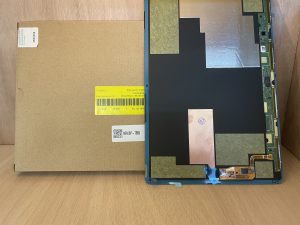I remember the sinking feeling I had when I accidentally dropped my iPhone 15 Pro into a pool. Like many, I panicked, knowing how water and electronics do not mix well.
But before you rush to replace your expensive phone or take it to a repair shop, there are steps you can take to fix water damage yourself.
Here I shall guide you through the process of water damage on an iPhone 15 Pro, from the initial tools needed to the specific steps of the process. By the end of this guide, you shall have a good understanding of what you can do to potentially save your phone from water damage.
Tools Needed
Before starting the process, gather the following tools:
- Microfiber cloth: For drying and cleaning the exterior of your phone without scratching it.
- SIM card ejector tool: To remove the SIM card tray easily.
- Small Phillips screwdriver: To open the phone’s casing carefully.
- Plastic spudger: For prying open the phone without causing damage to the delicate parts.
- Tweezers: To handle small components inside the phone with precision.
- Isopropyl alcohol (99%): For cleaning internal components and removing any corrosion.
- Soft-bristle brush: To gently clean debris and corrosion from the phone’s interior.
- Silica gel packets: For effectively drying out the phone.
- Anti-static mat and wrist strap: To prevent static electricity from damaging the phone’s internals.
- Hairdryer (optional): On a cool setting, to help dry the phone.
- Plastic container with a lid: For holding the phone and silica gel packets during the drying process.
Steps of the Process
Power Off Immediately
As soon as your iPhone 15 Pro is exposed to water, turn it off immediately. Continuing to use the phone while it is wet can cause short circuits and further damage. This initial step is crucial to prevent electrical issues that can arise from water interacting with the phone’s circuitry.
Remove the SIM Card and Tray
Use the SIM card ejector tool to remove the SIM card tray. This helps to prevent any water from being trapped inside the SIM card slot, which can lead to corrosion and further damage. Removing the SIM card also helps in drying out the internal components more effectively.
Dry the Exterior
Use a microfiber cloth to gently dry the exterior of the phone. Pay special attention to the charging port, headphone jack, and any other openings. Wipe off as much water as possible from the surface of the phone. Avoid using a paper towel or any material that can leave lint or fibers behind.
Open the Phone
This step requires caution. Use the small Phillips screwdriver to remove the screws at the bottom of the phone. Gently pry open the phone using a plastic spudger. Take your time to avoid damaging the delicate internal components. Opening the phone allows you to access and dry the internal parts more effectively.
Disconnect the Battery
Once the phone is open, disconnect the battery using the tweezers. This step is crucial to avoid any electrical issues while you are working on the phone. Disconnecting the battery helps to ensure that no current flows through the wet components, which can cause further damage.
Clean with Isopropyl Alcohol
Dip the soft-bristle brush in isopropyl alcohol and gently clean the internal components. Isopropyl alcohol helps to remove any corrosion and displace water. Be sure to focus on the connectors, battery terminals, and other areas that might have been exposed to water. Isopropyl alcohol evaporates quickly and leaves no residue, making it ideal for cleaning electronics.
Dry the Interior
Use the hairdryer on a cool setting to gently dry the internal components. Do not use heat as it can damage the sensitive parts. Alternatively, you can leave the phone open and let it air dry in a warm, dry environment. Ensure that all components are thoroughly dry before proceeding to the next step.
Use Silica Gel Packets
Place the phone in a plastic container with silica gel packets. Silica gel is excellent for absorbing moisture. Seal the container and leave it for at least 24 to 48 hours. This step ensures that any remaining moisture is absorbed, reducing the risk of corrosion and other damage.
Reassemble the Phone
After ensuring that the phone is completely dry, carefully reassemble it by reconnecting the battery and securing the casing with the screws. Make sure all components are placed correctly to avoid any functional issues. Take your time during reassembly to ensure that everything is properly aligned and secured.
Power On and Test
Power on the phone and check if it is working properly. Test all functions including the touchscreen, cameras, and speakers. If any issues persist, you might need to consult a professional. Testing all functions ensures that the phone is fully operational and that there are no lingering issues from the water damage.
Tips and Tricks
- Act Fast:The quicker you start the drying process, the higher the chances of saving your phone. Time is critical when dealing with water damage, as prolonged exposure can cause more severe damage.
- Avoid Rice:Contrary to popular belief, rice is not very effective at drying electronics and can introduce dust and debris into your phone. Silica gel packets are a much better option for absorbing moisture.
- Don’t Use Heat:High temperatures can damage the internal components. Stick to cool or room temperature air for drying. Using a hairdryer on a cool setting or letting the phone air dry is safer and more effective.
- Monitor for Corrosion:Even after drying, keep an eye on your phone for any signs of corrosion. This might appear as discoloration or residue on the internal components. Corrosion can cause long-term issues if not addressed promptly.
- Back-Up Data Regularly:Regular backups can save you from data loss in case your phone is irreparably damaged. Using cloud storage or an external backup device ensures that your data is safe even if your phone is not.
Conclusion
Experiencing water damage on your iPhone 15 Pro can be stressful, but taking immediate and careful action can make a significant difference.
With the right tools and steps, you might be able to fix the damage yourself and save on costly repairs. Remember to always act quickly, use proper drying techniques, and avoid common pitfalls like using rice. By following these tips, you shall have a better chance of reviving your iPhone and getting it back to working condition.













